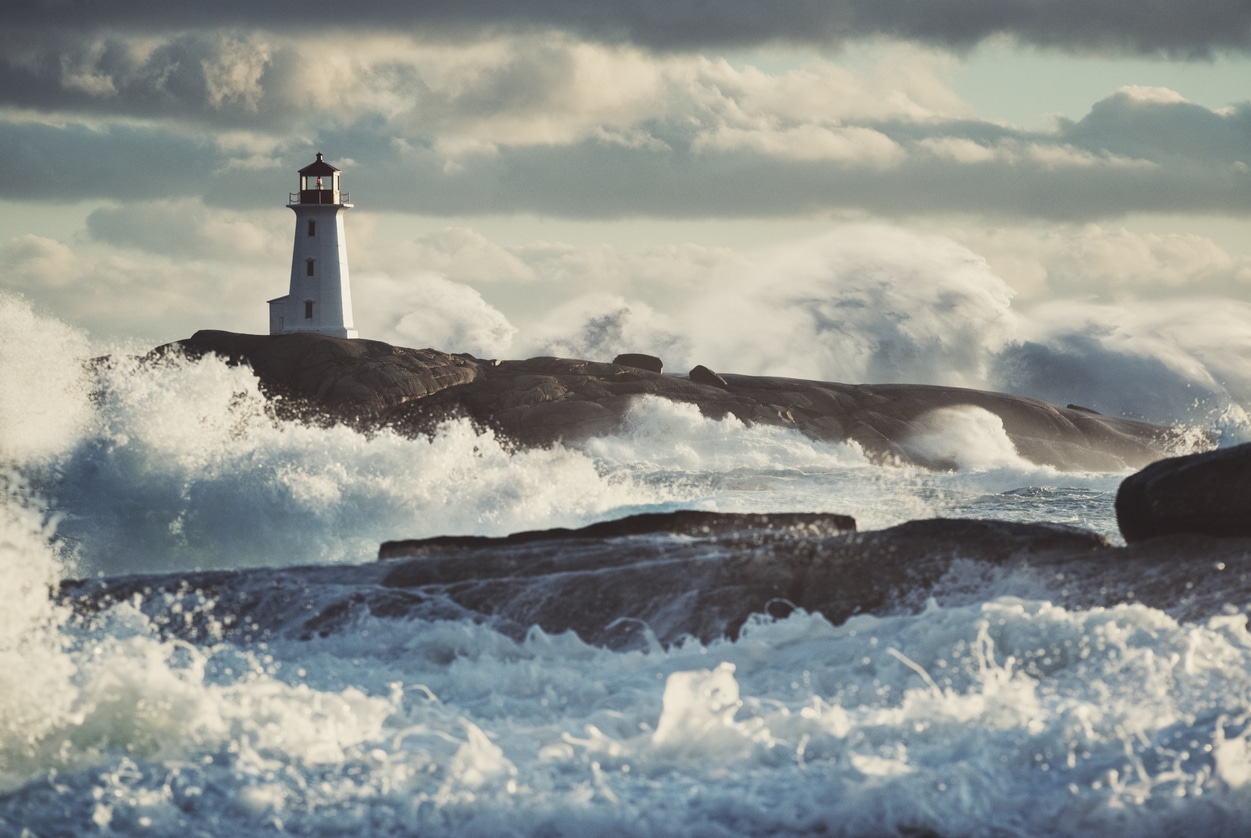Nor’easters, the large and often destructive storms that form along the U.S. East Coast, are getting stronger. A new long-term study by researchers at the University of Pennsylvania shows that the most intense nor’easters have increased in strength and precipitation rates over the past eight decades.
By analyzing 85 years of weather data, the team found that while the overall number of these storms has stayed relatively consistent, the strongest ones are becoming more powerful, producing higher wind speeds and heavier rainfall or snowfall.
What Are Nor’easters?
Nor’easters are a specific type of extratropical cyclone—storms that form outside of the tropics in the midlatitude regions of the planet. They often develop between September and April, affecting densely populated coastal areas from the Carolinas through New England.
These storms get their name from the prevailing northeasterly winds that typically accompany them. Several factors fuel them:
- Sharp temperature contrasts exist between the warm Atlantic Ocean and the colder landmass.
- Moisture from the ocean, which provides energy as it condenses.
- Atmospheric instability, especially along the boundary between cold and warm air masses.
Nor’easters can bring hurricane-like winds, intense snow or rain, coastal flooding, and dangerous storm surges. Because they frequently affect large metropolitan areas, they have outsized impacts on lives, infrastructure, and the economy.
Some of the most notable examples include:
- The Perfect Storm of 1991, which merged with a hurricane and reached wind speeds of nearly 29 meters per second.
- The Storm of the Century in 1993 was one of the deadliest nor’easters, claiming 208 lives and producing hurricane-force winds.
- Snowmaggedon in 2010, which left more than 230,000 homes without power.
- The January 2018 blizzard was a “bomb cyclone” that rapidly intensified, setting records for low pressure and wind speeds.
How the Study Was Conducted
The research team used a storm-tracking algorithm applied to ERA5 reanalysis data, which combines historical weather observations with modern climate models to reconstruct past atmospheric conditions.
To be classified as a nor’easter, a storm had to meet several criteria:
- It needed to persist for at least 24 hours and travel a minimum of 1,000 kilometers.
- It had to reach a minimum central pressure of 980 hPa, comparable to a Category 2 hurricane, to ensure only impactful storms were included.
- It had to intersect the defined East Coast region between 33°N and 45°N latitude.
Using this approach, the researchers identified 900 nor’easters from 1940 to 2025, averaging 10.6 storms per year. Their tracking captured 94 percent of all historically documented nor’easters in the dataset.
They then analyzed two key storm characteristics:
- Maximum 10-meter wind speeds during each storm.
- Precipitation rates are calculated as the average hourly rainfall or snowfall within a set radius around the storm’s center.
What the Researchers Found
The study looked at both typical storms and extreme events.
- For median storms, there was little change in intensity over time.
- For stronger storms — the top one-third of nor’easters — the researchers found a significant upward trend in wind speeds, meaning the most intense storms have grown more powerful.
This was determined using a statistical technique called quantile regression, which evaluates trends at different intensity levels rather than just the average. The biggest changes were seen at the upper end of the storm intensity scale — in the 90th to 99th percentiles.
They also found a notable increase in precipitation rates, meaning the strongest nor’easters now produce heavier rainfall and snowfall than they did decades ago. This aligns with the fact that a warmer atmosphere can hold more moisture, leading to more intense precipitation.
The trends were consistent across different statistical tests and even more pronounced when looking only at the modern satellite era (1979 onward).
Why Nor’easters Are Changing
The study points to several physical factors that may explain the changes:
- Warmer ocean temperatures provide more moisture and energy to developing storms.
- Stronger land–ocean temperature contrasts along the East Coast can intensify storms as they form and move northward.
- Increased latent heating, which occurs when moisture condenses in the atmosphere, fuels further storm growth.
While overall climate models suggest there may be fewer midlatitude storms in a warmer world, those that do form—especially nor’easters—may be stronger and wetter.
What This Means for the East Coast
The findings suggest that the East Coast faces increasing risks from high-impact nor’easters, including:
- Stronger winds can lead to more power outages and infrastructure damage.
- Heavier snowfall is causing transportation shutdowns and prolonged recovery efforts.
- Increased coastal flooding and erosion occur as storm surges combine with higher sea levels.
The economic stakes are high. The Ash Wednesday storm of 1962 caused an estimated $3 billion in damage (in 1962 dollars) — equivalent to over $31 billion today. With more development along the coast than ever before, a similarly powerful storm today could have even greater consequences.
The Research Team
The study was conducted by scientists from the Department of Physics and Astronomy and the Department of Earth and Environmental Science at the University of Pennsylvania in Philadelphia. By creating one of the most detailed historical records of nor’easter behavior to date, their work provides important insights for understanding and preparing for future storms.
Key Takeaway
While the number of nor’easters each year may not be increasing, the most powerful storms are becoming stronger and wetter. This trend underscores the need for ongoing research, improved forecasting, and proactive measures to help communities along the East Coast better withstand the risks posed by these evolving storms.












